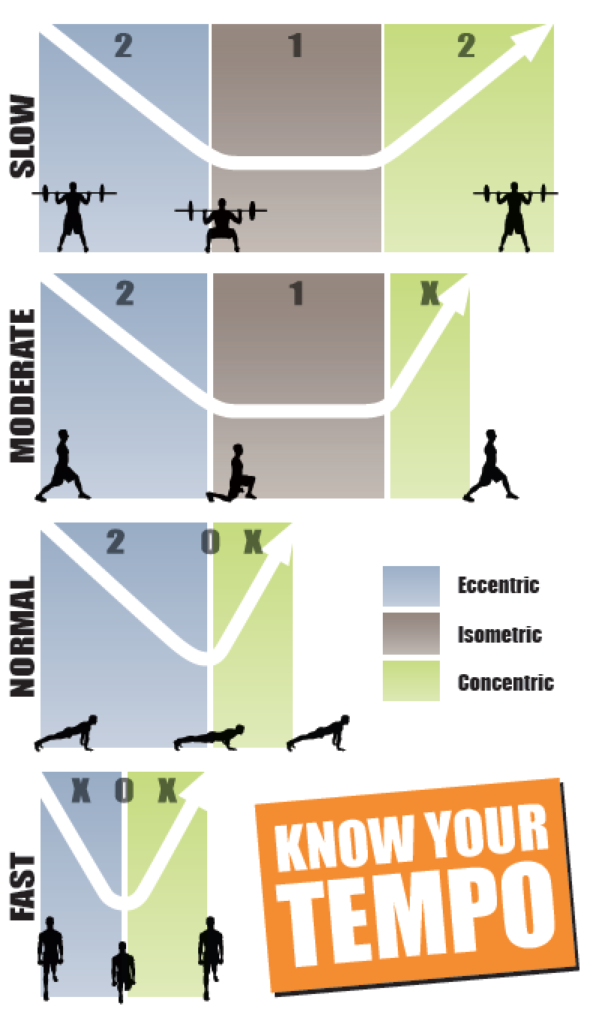As a musician and member of the rhythm section, I need to know something about tempo. But today I want to talk to you about how tempo can be used to get the most out of your workouts. In fact, one of the critical factors affecting the success of your efforts will be the tempo of your workout.
The Science of Tempo
Here’s a little technical background for those of you who like science-y stuff. Your body performs three types of muscle contractions: eccentric, concentric, and isometric.
- An eccentric contraction is caused when a muscle lengthens under tension. This is most often, but not exclusively the downward phase of an exercise. For example, going from the standing position to the bottom position of a squat. On a side note, eccentric contractions cause the most muscle soreness but also help protect our bodies from injuries.
- An isometric contraction is when a muscle contracts and doesn’t make any visible changes in its length. This would be holding the bottom squat position.
- A concentric contraction occurs when muscles shorten to produce a movement. Returning to the standing position in our squat example.

Our gym’s tempo reminder
You can see that at every phase of an exercise, your muscle is working. And, since your muscles are working continually, we want to be sure we strengthen them during all ranges of motion using a variety of tempos. In that way, you will be able to control the forces you are imposing upon your bodies not just during exercise, but during your daily activities and living because our muscles can better do their job of moving our skeletal system while providing stability and support to our joints.
Muscles Never Sleep
One thing I like to remind members and students is that you aren’t just lifting weights … you are lifting AND lowering weights. And since your body is made up of different muscle fiber types, each one is stimulated differently depending upon the tempo of the exercise you perform. This is just another reason why our customized programs—complete with sequential order and timing cues—are so effective at burning fat and building lean muscle!
Don’t worry, this doesn’t mean that all exercises need to be performed at a snail’s pace. (How would you even do a medicine ball slam slowly?) However, there are five basic tempos we use at the Bodysmith: slow, moderate, normal, fast and explosive. Let’s use our squat example to describe each.
- Slow = 2-second downward phase (eccentric), then a 1-second pause (isometric) and a 2-second upward phase (concentric)
- Moderate = 2-second down, 1-second pause and an upward phase that is performed as fast as possible
- Normal = 2-second down, no pause, fast as possible up
- Fast = As fast as possible down, no pause, then as fast as possible up
- Explosive = This tempo is typically reserved for powerful movements like medicine ball exercises or kettlebell swings. In our squat example, we would perform a jump squat.
Give it a try in your own workout and see how various tempos treat your body. If you are a Bodysmith customized member, we’ve got you covered because we have programmed tempos for you based on your body, program, and desired objectives.
–Coach Brad


